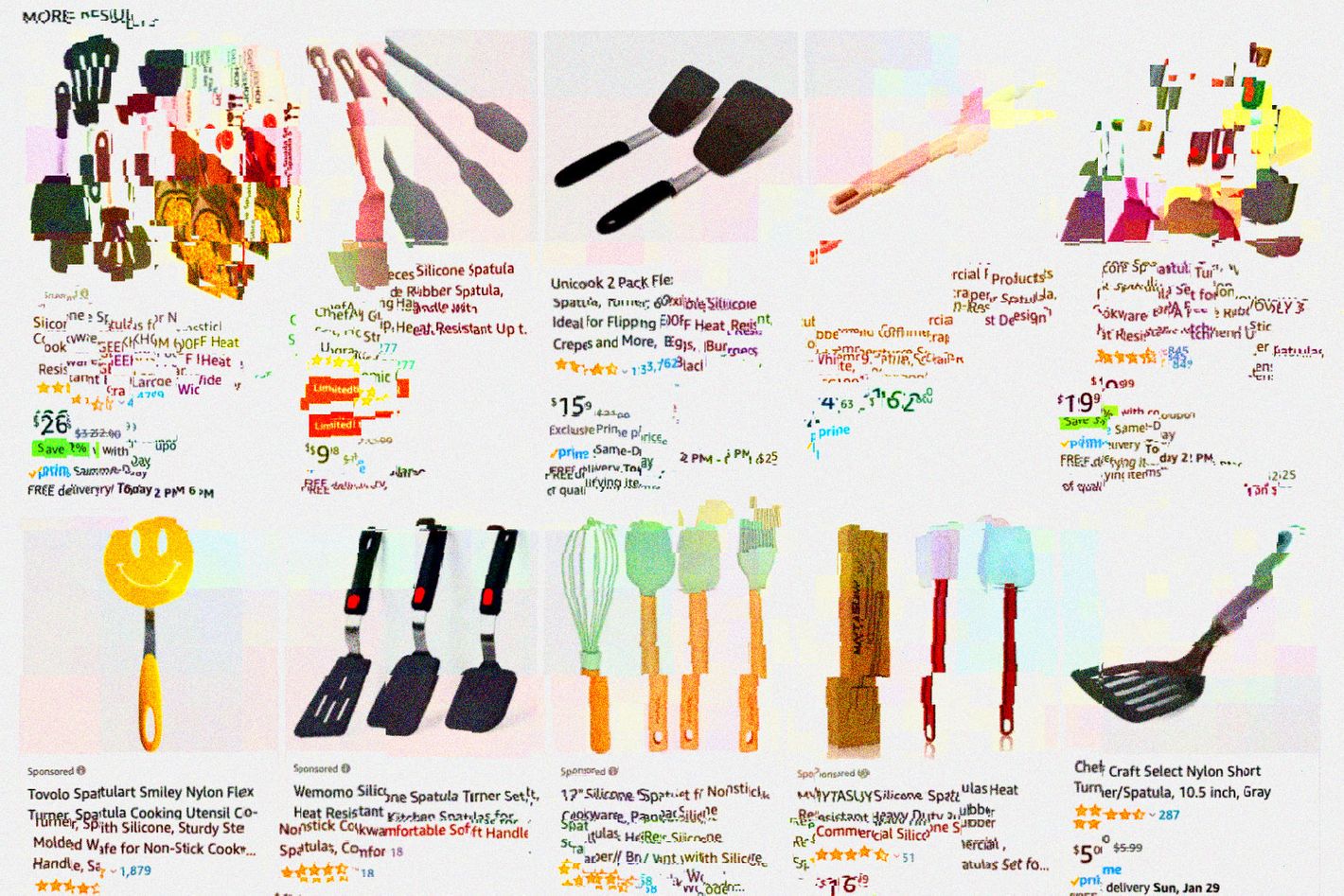Photo-Illustration: Intelligencer
Amazon would like the world — and its investors — to know it’s trying a few new things with generative AI. “We’ve got about 1,000 different generative AI applications we’ve either built or are in the process of building right now,” said CEO Andy Jassy on an earnings call in February. Most of these will affect internal tools and processes, but regular customers might have noticed a few recent changes to the Amazon they see and use. In addition to its AI-summarized reviews, last month Amazon debuted Rufus, a chatbot alternative to search, on its site and apps. And last week, it started testing Interests, which turns descriptive requests — “I am looking for feminine energy and aesthetic in home décor … under $100” or “travel-friendly skin-care products from premium brands,” to borrow Amazon’s examples — into auto-updating widgets you can come back to and check.
These are all “AI” features in that they rely on LLM-based technology to summarize review text, to layer a chat interface on top of search, and to, as Amazon puts it, “automatically translate everyday language into queries and attributes that traditional search engines can process and turn into product recommendations.” They’re also responses to things going on outside Amazon that it would either like to co-opt or compete with. Automatic review summaries approximate SEO e-commerce publishing, in which review sites (and quasi-review sites) read and summarize Amazon users’ feedback. As for AI-generated moodboarding, Amazon has long had an interest in Pinterest, which is a quiet but major force in online shopping, in part because it provides a way to organize Amazon’s chaos. Maybe “Interests” captures some of that? Rufus, the most visible of the bunch, is both a “chatbot, why not?” AI-boom feature-add and a response to people using services like ChatGPT for shopping advice, which is a marginal but fast-growing trend.
At first glance, these are just slightly different ways to use Amazon, alternate paths to the same “Buy Now”–button destination, and new enticements to spend money in basically the same way. But they also offer a way to see Amazon and to understand how strange its business has become.
When Microsoft and Google first teased AI-powered search back in early 2023, their pitches were similar to Amazon’s. With LLMs, you could submit queries in plain English and get plain English back. You could have a conversation of sorts with results to refine your search. You could get not just results but context for those results.
These AI interfaces were simple and clean. There were no ads, and while there was conversational text and the chatbots offered more than just links, the links were still at the center of the experience, and were sensibly selected and ordered. This all-new Google was, mostly, a lot like Google used to be; it was AI Google, sure, but more than that, it was unmonetized Google, which at least looked pretty appealing. Similarly, Amazon’s new interfaces, while superficially novel, are most appealing for what they lack: disorienting layers of interface junk, abundant but redundant options, and, of course, all those ads.
For fairly obvious reasons that have now been borne out with extensive reporting, Google didn’t end up replacing Search, one of the most popular and well-monetized products on the internet, with a stripped-down, ad-free AI alternative. Instead, it bolted AI-generated summaries to its results pages, a controversial half-measure that has so far amounted to more, not less, bloat. In the meantime, newer AI firms, for now content to lose money in a race for market share, have started adding basic search features to their core products. More recently, Google started testing AI Mode, which looks a lot like its 2023 demo but with a more capable underlying model. This demo too is clean and ad free, available first to paid users and now to anyone who wants to test it.
This would seem like less of a problem for Amazon, which we tend to think of as an e-commerce operation, but that’s not quite right. Amazon’s encroaching shabbiness is a consequence of its success in the advertising business; analysts expect Google’s share of the search-advertising market to dip below 50 percent this year, in large part due to gains by Amazon, whose share is approaching 25 percent. Advertising isn’t just a $50 billion business for the company — along with AWS, it’s one of its most profitable businesses, squeezing massive amounts of money from (mostly) sellers and brands in exchange for visibility on Amazon’s own properties. It’s a pretty good business, provided you’re in a position to unilaterally establish and control it.
Amazon has, in this sense, a lot in common with Google, which is still struggling to resolve the tensions between its advertising business and its barely monetized AI products. Meanwhile, as Joanna Stern writes in The Wall Street Journal, one of the things money-losing AI search alternatives are pretty good at is basic product recommendations, and data from Adobe suggests that people are increasingly asking ChatGPT, and others, for buying advice. Rufus, like Google’s early chat-search half-steps, isn’t especially useful, except to draw attention to just how extractive and inefficient the Amazon experience has become.
More Screen Time

